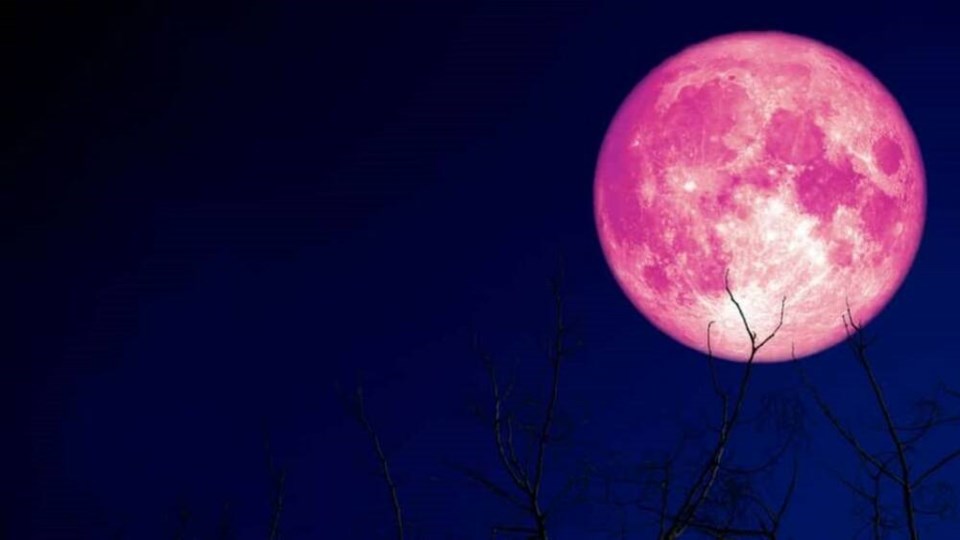Call it what you like, but for many people a full moon in June is a Strawberry Moon.
June’s full moon this year will appear tonight — the northern hemisphere’s first full moon of the summer.
According to the website , the name Strawberry Moon comes from the wild strawberries that tend to ripen during the month.
There’s also a long list of alternate names ripe for the picking, including Celtic labels like Horse Moon, Dyan Moon and Rose Moon, the Anglo-Saxon moniker Mead Moon and options of disputed origin such as Flower Moon and Hot Moon.
It has also been called a Honey Moon — since June can be a prime time for collecting honey — but the origin of the term “honeymoon” remains up for debate.
For Randy Enkin, past-president of the Victoria Centre of the Royal Astronomical Society of Canada, Indigenous names for moons are more to the point.
He pointed to the WSÁNEĆ name for the June/July moon, which is ĆENHENEN — meaning “humpback salmon return to earth.”
Enkin also likes the Haida name for June’s full moon — Gáan Kungáay — or “Berries Ripen Moon.”
The other months also have full-moon names. Coming up, the July version is sometimes called Wolf Moon, August has a Sturgeon Moon and September/October has a Harvest Moon.
“There’s so many different names for the full moon,” Enkin said.
“The most popular ones are in the Farmers’ Almanac.”
Enkin, who traces his fascination with astronomy to watching the 1969 moon landing on TV as an eight-year-old, said he loves “all aspects of the moon” — although the array of different names for full moons surprises him.
“That being said, I love any publicity that gets people to look at the night sky,” he said. “It’s a great thing, so I’m always in favour of that.”
For moon watchers, today’s forecast calls for clear skies followed by some evening cloudy periods.
>>> To comment on this article, write a letter to the editor: [email protected]



